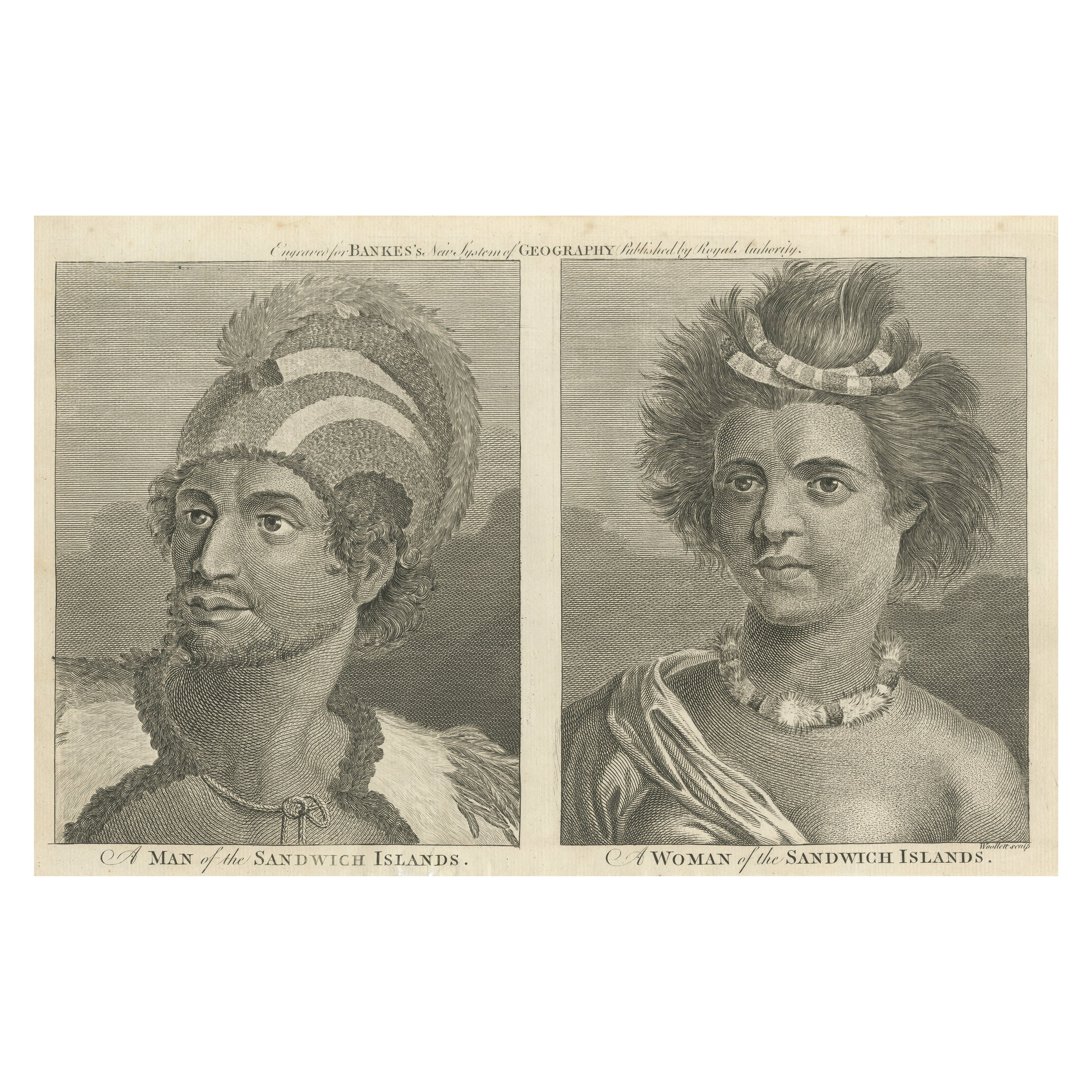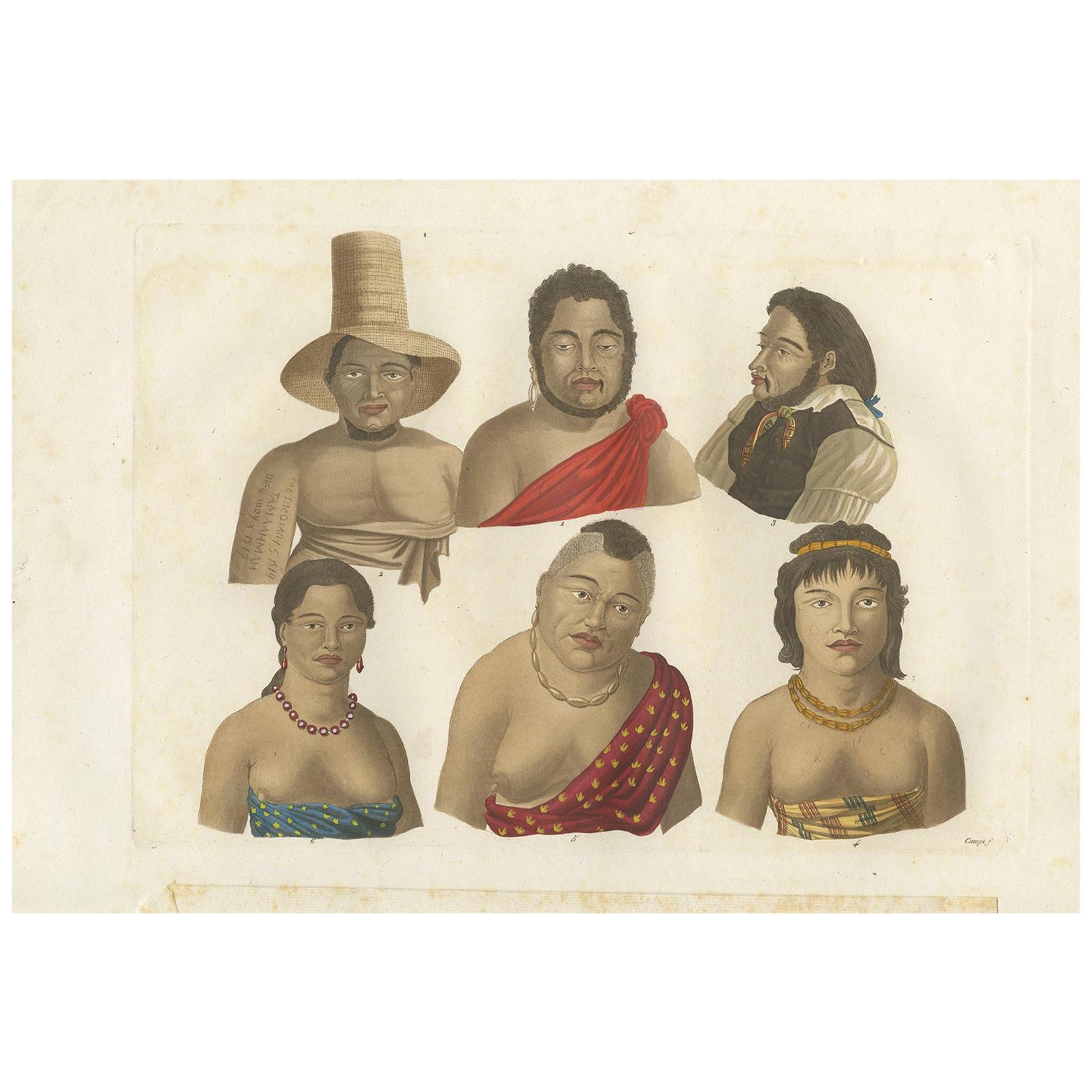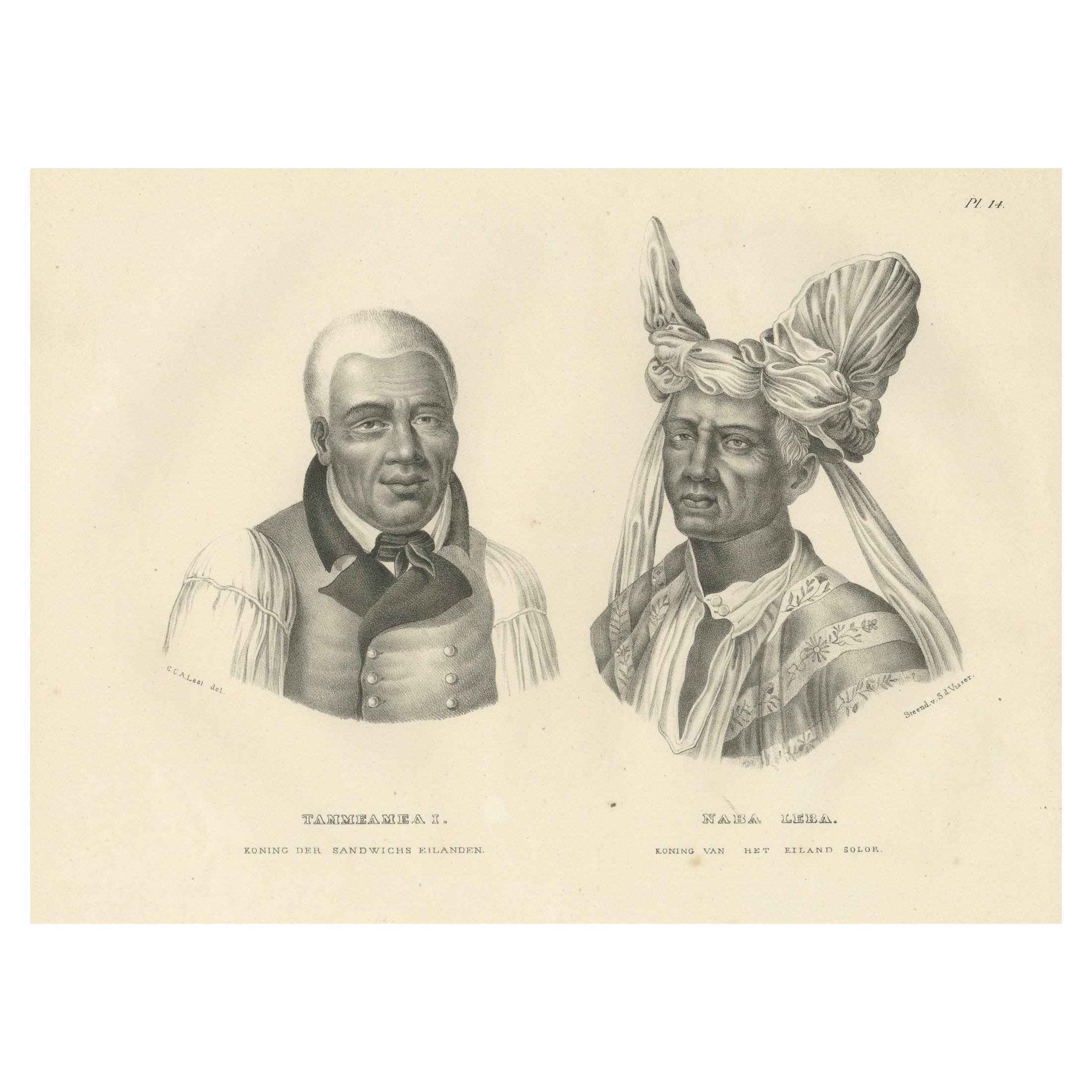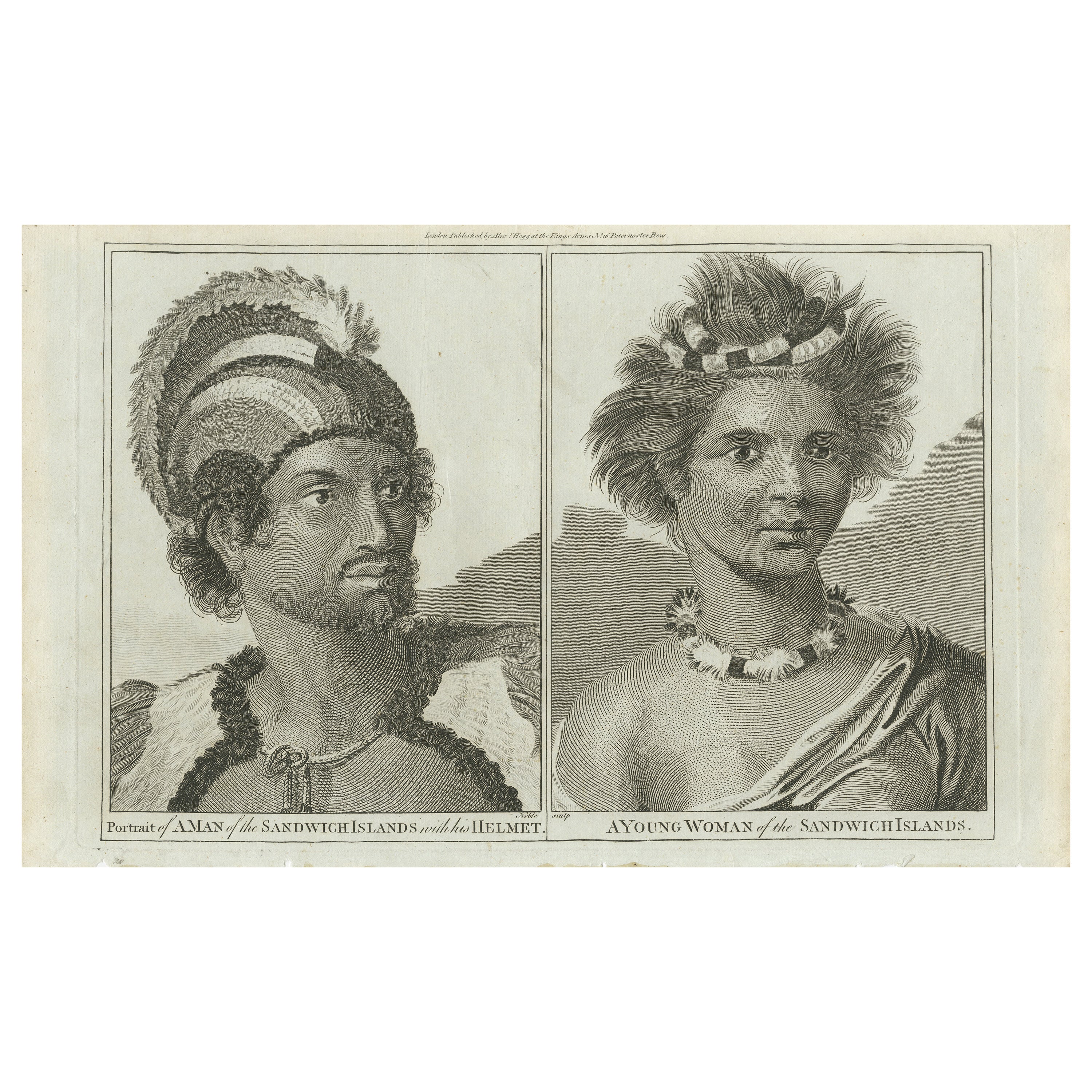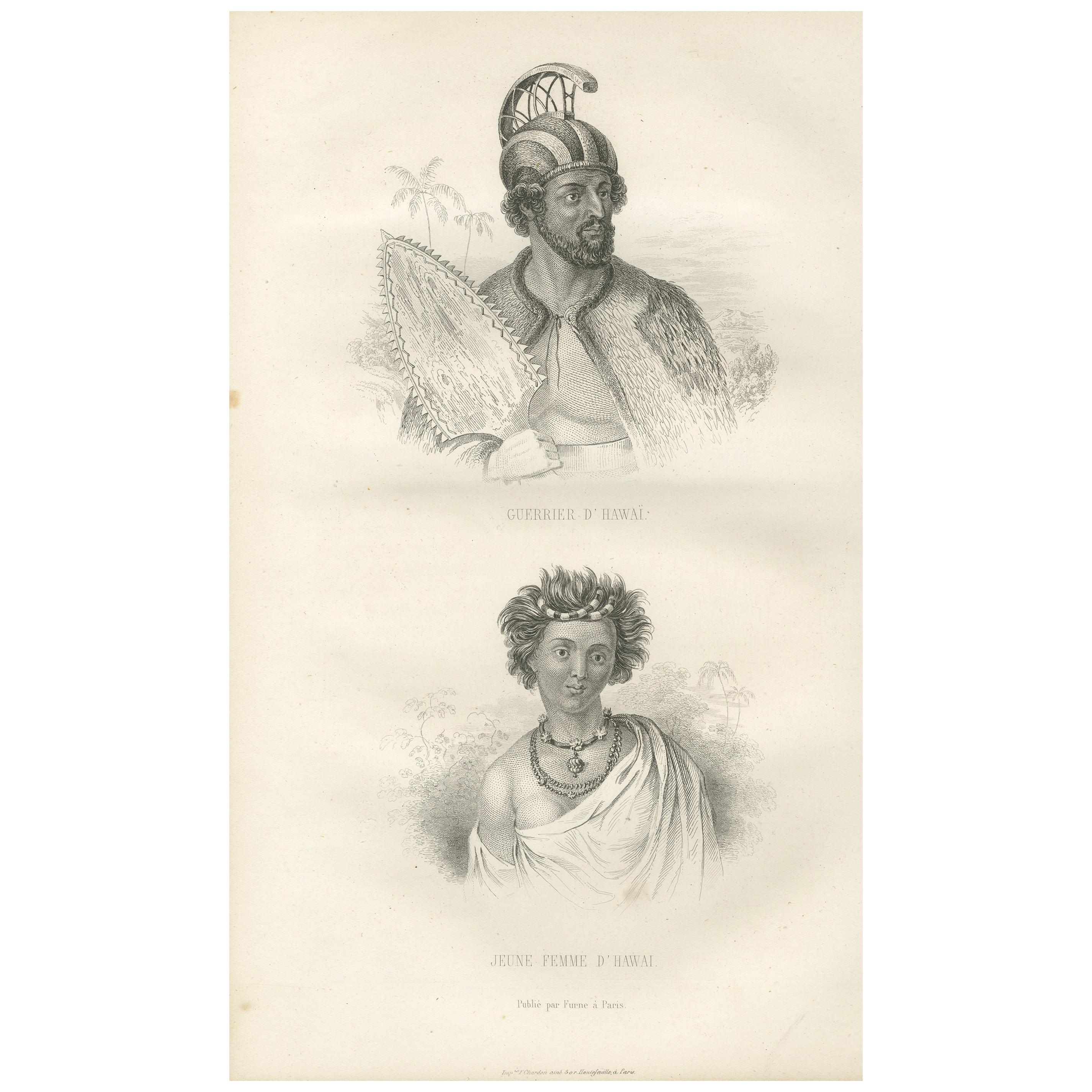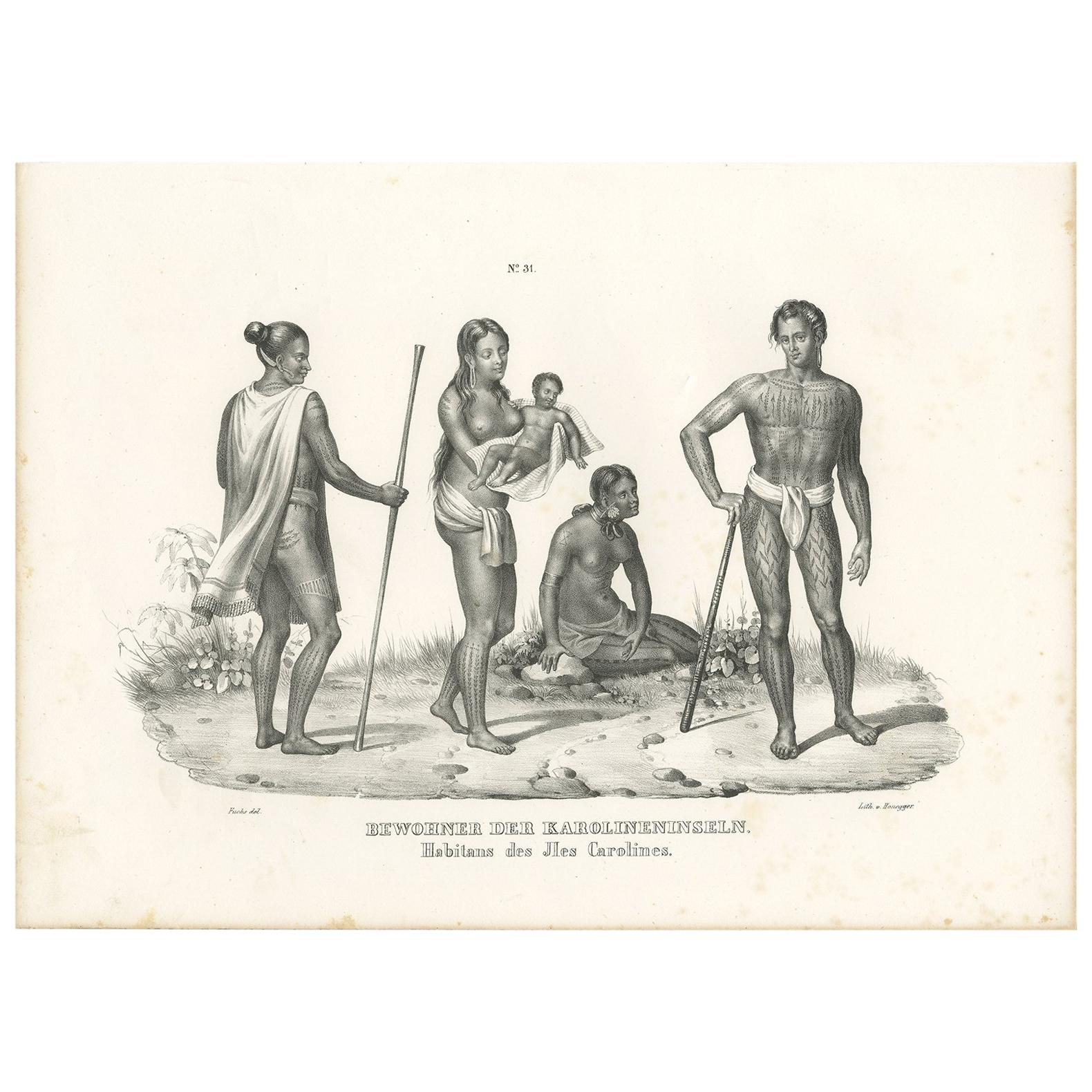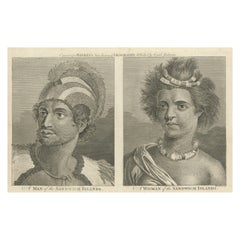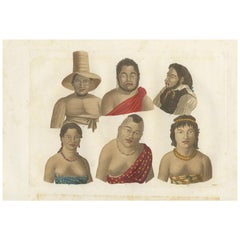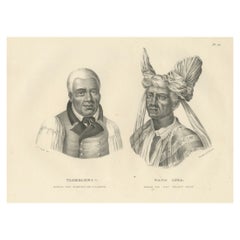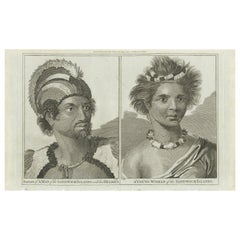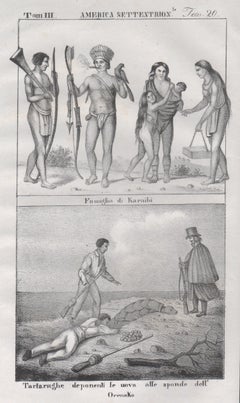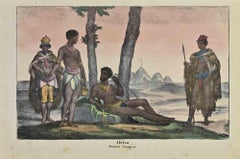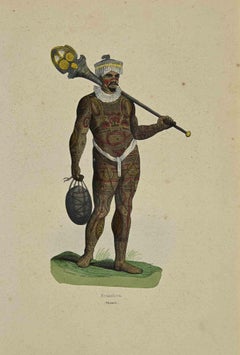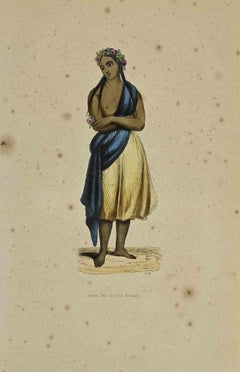Items Similar to Inhabitants of the Sandwich Islands (Hawaii) by Brodtman, 1835
Want more images or videos?
Request additional images or videos from the seller
1 of 10
Inhabitants of the Sandwich Islands (Hawaii) by Brodtman, 1835
$395.73
$527.6425% Off
£294.38
£392.5125% Off
€330
€44025% Off
CA$541.89
CA$722.5225% Off
A$602.51
A$803.3425% Off
CHF 314.60
CHF 419.4625% Off
MX$7,333.97
MX$9,778.6225% Off
NOK 4,014.10
NOK 5,352.1425% Off
SEK 3,761.02
SEK 5,014.6925% Off
DKK 2,512.11
DKK 3,349.4825% Off
Shipping
Retrieving quote...The 1stDibs Promise:
Authenticity Guarantee,
Money-Back Guarantee,
24-Hour Cancellation
About the Item
This lithograph by Karl Joseph Brodtmann depicts two individuals from the Sandwich Islands, now known as Hawaii. The artwork reflects Brodtmann’s ethnographic interest in documenting the appearance, clothing, and adornments of the indigenous peoples of the Pacific Islands, particularly during the period of European exploration and contact in the 19th century.
Description:
The lithograph presents two detailed portraits of Hawaiian individuals, identified as inhabitants of the Sandwich Islands. These figures are shown in traditional attire and headdresses, showcasing both their individual features and the cultural symbols of status or identity in Hawaiian society.
1. Man (left):
The male figure is adorned with a feathered headdress, likely made from native bird feathers, which were symbols of high status in Hawaiian society. The craftsmanship and pattern of the feathers suggest that this man could be a figure of some importance, such as a chief or noble. He also wears a feathered cape, another item traditionally associated with Hawaiian nobility, known as an ‘ahu‘ula. His face is calm and dignified, with a beard and short, curly hair beneath the headdress.
2. Woman (right):
The woman is depicted wearing a simple yet elegant adornment, including a lei around her neck made of what appears to be feathers or other natural materials. Her clothing is draped across her shoulder, similar to traditional Hawaiian garments made from kapa (barkcloth). Her hair is worn in a natural, voluminous style, and her expression is serene, reflecting the calm and dignified portrayal common in European depictions of indigenous peoples at the time.
The lithograph emphasizes both the distinct physical features and the cultural attire of the Hawaiian people, focusing on the detailed rendering of their adornments and garments.
Maker:
Karl Joseph Brodtmann (1787–1862) was a Swiss lithographer known for his detailed work in ethnographic and natural history illustration. His works were widely appreciated in scientific circles during the 19th century and contributed to European knowledge of non-Western peoples. Brodtmann’s ethnographic portraits, such as this one, provided European audiences with visual records of the cultural diversity encountered during the age of exploration.
Technique and Style:
This lithograph was created using lithography, a printmaking technique that allows for the detailed rendering of textures, such as the feathered headdress and lei. Brodtmann’s style is characterized by ethnographic realism, where the subjects are portrayed with a focus on accuracy and cultural markers, balanced with a romanticized European view of foreign cultures. The careful shading and detailing of the clothing, headdresses, and facial features give the figures a lifelike quality.
Cultural Context:
The Sandwich Islands, now known as Hawaii, were first encountered by Europeans in the late 18th century during the voyages of Captain James Cook. The islands were named after John Montagu, 4th Earl of Sandwich, by Cook. The individuals depicted in this lithograph are likely members of the Hawaiian nobility, as their feathered attire—particularly the feathered cloaks and headdresses—were reserved for high-ranking chiefs (ali‘i) in Hawaiian society.
Feathered garments, such as the ones shown here, were highly prized in Hawaiian culture and were symbols of power and prestige. These garments were crafted from the feathers of native birds, including the ‘i‘iwi and ‘ō‘ō, which were often gathered by bird catchers who played an important role in Hawaiian society. The lei, also depicted in the portrait of the woman, was (and still is) a significant cultural symbol in Hawaii, used to show affection, respect, or honor.
This lithograph, like others in Brodtmann’s ethnographic series, would have served as both an artistic and scientific representation, providing European audiences with insight into the appearance, dress, and cultural practices of the Hawaiian people during a period of increasing contact with the Western world.
- Dimensions:Height: 12.8 in (32.5 cm)Width: 10.24 in (26 cm)Depth: 0 in (0.02 mm)
- Materials and Techniques:
- Period:
- Date of Manufacture:1835
- Condition:Condition: good, given age. General age-related toning and/or occasional minor defects from handling. Some stains along the right border, not affecting the image. Please study scan carefully.
- Seller Location:Langweer, NL
- Reference Number:Seller: BG-13176-161stDibs: LU3054341516002
About the Seller
5.0
Recognized Seller
These prestigious sellers are industry leaders and represent the highest echelon for item quality and design.
Platinum Seller
Premium sellers with a 4.7+ rating and 24-hour response times
Established in 2009
1stDibs seller since 2017
2,511 sales on 1stDibs
Typical response time: <1 hour
- ShippingRetrieving quote...Shipping from: Langweer, Netherlands
- Return Policy
Authenticity Guarantee
In the unlikely event there’s an issue with an item’s authenticity, contact us within 1 year for a full refund. DetailsMoney-Back Guarantee
If your item is not as described, is damaged in transit, or does not arrive, contact us within 7 days for a full refund. Details24-Hour Cancellation
You have a 24-hour grace period in which to reconsider your purchase, with no questions asked.Vetted Professional Sellers
Our world-class sellers must adhere to strict standards for service and quality, maintaining the integrity of our listings.Price-Match Guarantee
If you find that a seller listed the same item for a lower price elsewhere, we’ll match it.Trusted Global Delivery
Our best-in-class carrier network provides specialized shipping options worldwide, including custom delivery.More From This Seller
View AllPortraits of Nobility from the Sandwich Islands (Hawaii), Published circa 1790
Located in Langweer, NL
This original antique engraving is a set of two portraits side by side from "A New, Royal, Authentic and Complete System of Universal Geography, Antient and Modern" published by C. C...
Category
Antique Late 18th Century Prints
Materials
Paper
$306 Sale Price
20% Off
Antique Print of Inhabitants of the Region of the Sandwich Islands by Ferrario
Located in Langweer, NL
Original antique print of various inhabitants of the region of the Sandwich Islands ('Capi ell'isola Mowé'). This print originates from 'Costume Antico e Moderno: Palestine, China, I...
Category
Antique Mid-19th Century Prints
Materials
Paper
$191 Sale Price
20% Off
Portraits of Tammeamea I of Hawaii and Naba Leba of Solor by Brodtmann, 1836
Located in Langweer, NL
This lithograph by Karl Joseph Brodtmann depicts two important leaders from the Pacific and Southeast Asia regions: Tammeamea I, King of the Sandwich Islands (now known as Hawaii), a...
Category
Antique 1830s Swiss Prints
Materials
Paper
$395 Sale Price
25% Off
Regalia of the Sandwich Islands: Portraits in Traditional Attire, 1790
Located in Langweer, NL
This engraving, published in London by Alex Hogg at the Kings Arms, No.16 Paternoster Row, features two side-by-side portraits with the labels "Portrait of ...
Category
Antique Late 18th Century Prints
Materials
Paper
$326 Sale Price
20% Off
Antique Print of a Warrior and Young Lady of Hawaii by D'urville (1853)
Located in Langweer, NL
Antique print titled 'Guerrier d'Hawaï - Jeune femme d'Hawai'. Original print of a warrior and young lady of Hawaii. This print originates from volume 1 of 'Voyage Autour du Monde' b...
Category
Antique Mid-19th Century Prints
Materials
Paper
$191 Sale Price
20% Off
Antique Print of Natives of the Caroline Islands by Honegger, 1836
Located in Langweer, NL
Antique print titled 'Bewohner der Karolineninseln, Habitans des Iles Carolines'. This print depicts natives of the Caroline Islands (pacific). Origin...
Category
Antique Mid-19th Century Prints
Materials
Paper
$167 Sale Price
20% Off
You May Also Like
Caribbean Indigenous People / Orinoco, America, mid 19th century lithograph.
Located in Melbourne, Victoria
'Famiglia di Karaibi' / 'Tartarnughe deponenti le uova alle sponde dell' Orenoko''
Italian lithograph, c1841. Originally from 'Galleria universale di tutti i popoli del mondo' by Gi...
Category
Mid-19th Century Naturalistic Figurative Prints
Materials
Lithograph
Ancient African Customs - Lithograph by Auguste Wahlen - 1844
Located in Roma, IT
Ancient African Customs is a lithograph realized by Auguste Wahlen in 1844.
Hand colored.
Good condition.
At the center of the artwork is the original title "Africa" and subtitle ...
Category
1840s Modern Figurative Prints
Materials
Lithograph
Noukahiwa - Lithograph by Auguste Wahlen - 1844
Located in Roma, IT
Noukahiwa is a hand colored lithographs realized by Auguste Wahlen in 1844.
Good conditions.
The artwork belongsto the Suite Moeurs, usages et costume...
Category
1840s Modern Figurative Prints
Materials
Lithograph
Jeune Fille de l'ile Pitcairn - Lithograph by Auguste Wahlen - 1844
Located in Roma, IT
Jeune Fille de l'ile Pitcairn is a hand colored lithograph realized by Auguste Wahlen in 1844.
Good conditions.
The artwork belongsto the Suite Moeurs, usages et costumes de tous l...
Category
1840s Modern Figurative Prints
Materials
Lithograph
Original Antique Ethnographical Print, Figures, New South Wales, Australia, 1809
Located in St Annes, Lancashire
Wonderful ethnographical print.
A copper-plate engraving after Lesieur
Published by Sherwood, Neely & Jones. Dated 1809
Unframed.
Category
Antique Early 1800s English Folk Art Prints
Materials
Paper
Ancient African Customs - Lithograph by Auguste Wahlen - 1844
Located in Roma, IT
Ancient African Customs is a lithograph made by Auguste Wahlen in 1844.
Hand colored.
Good condition.
At the center of the artwork is the original title "Africa" and subtitle "Cos...
Category
1840s Modern Figurative Prints
Materials
Lithograph
More Ways To Browse
Dovetail Vinyl Record
Dragon Boat
Egyptian Cat
Embossed Copper Box
English Bow Front Chest
English Headboard
English Iron Bed
Folding Travel Clock
Fornasetti Paper
Four Poster Bed Kings
Francois Pompon
Franz Xavier Bergman
Frem Rojle Chair
French Confit Jar
French Opaline Bottle
French Soda
Garden Rabbit
German Cigarette Case
